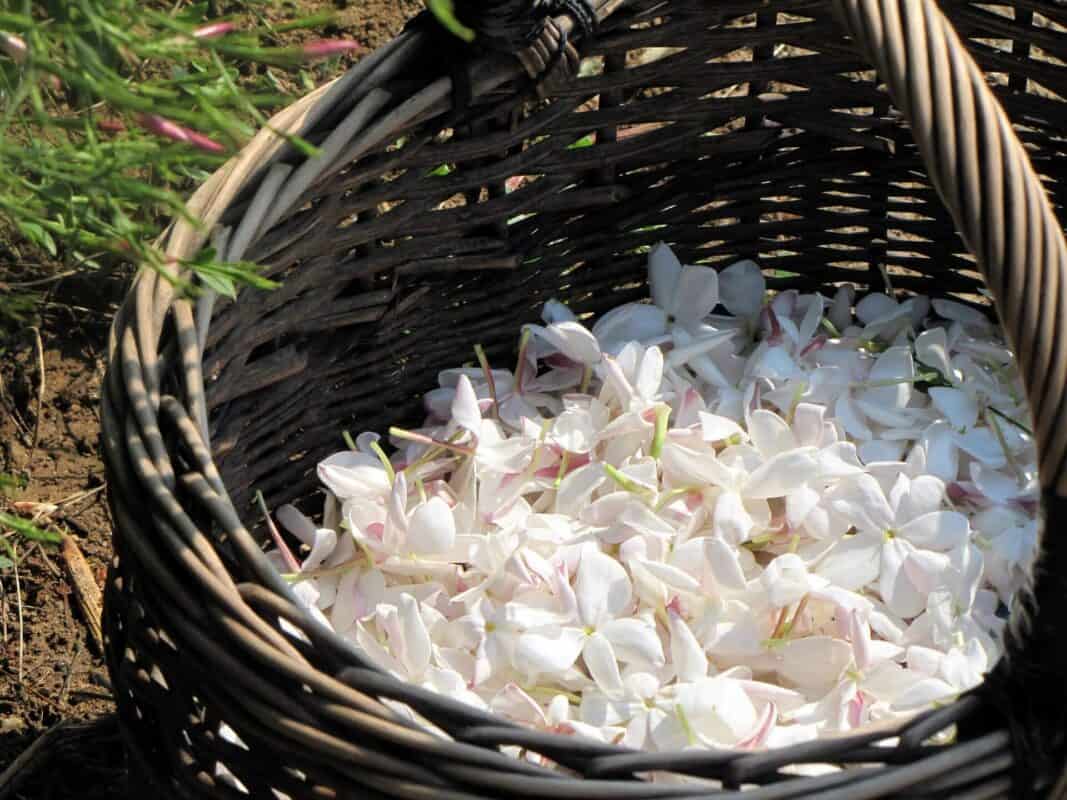Exploring the Scent: What Does Jasmine Smell Like in Perfume

The Ultimate Guide to Jasmine: What Does Jasmine Smell Like and Why You’ll Love It
Jasmine, often heralded as the scent jewel of the garden, captures the essence of floral elegance with its profoundly intoxicating scent. This comprehensive guide delves into the world of jasmine, exploring its origins, scent profile, benefits, and its esteemed place in the art of perfumery. Whether you’re a connoisseur of fine fragrances or a curious newcomer, prepare to be captivated by the timeless charm of jasmine.
With its delicate white blossoms, jasmine is more than just a feast for the eyes; it’s a symphony for the senses. Esteemed across various cultures for its distinctive fragrance, jasmine signifies purity, love, and sensuality, transcending the mere aesthetic to become a pivotal element in perfumery. It embodies the perfect union of visual beauty and fragrant splendor, making it a cherished component in both gardens and fragrance bottles across the globe.
What Is the Origin of Jasmine’s Fragrance?
The mesmerizing fragrance of jasmine originates from its essential oils, extracted from the flower’s petals. Although Jasminum officinale (common jasmine) and Jasminum grandiflorum (Spanish jasmine) are the most well-known, several other species such as Jasminum sambac (Arabian jasmine) and Jasminum polyanthum (pink jasmine) also contribute to the diverse scent palette used in perfumery. Native to the Himalayas and now cultivated worldwide, jasmine’s unique scent stems from a complex chemical composition, including notes of benzyl acetate, linalool, and jasmine lactone, among others, which combine to create its unmistakable scent.
What Does Jasmine Smell Like?
Capturing the essence of jasmine in words is a challenge due to its complex and multifaceted nature. Its primary fragrance is sweet and intensely floral, often with a fresh, slightly green undertone that can evoke a sense of warmth and exotic spices. Some varieties exhibit a subtler fruitiness, akin to the soft whispers of peach or apricot. This rich spectrum of smells makes jasmine a beloved note in many perfumes, offering an experience that is both comforting and deeply sensual.
The Fragrant Benefits of Jasmine
Jasmine is celebrated not only for its delightful scent but also for its array of benefits. It is renowned for its calming effects, making it a staple in aromatherapy to ease stress and anxiety. Its ability to uplift moods, promote restful sleep, and serve as an aphrodisiac further adds to its appeal. The benefits of jasmine extend into skincare, where it is valued for its soothing, hydrating, and healing properties, making it a versatile ingredient in beauty treatments.
Jasmine in Perfumery: Crafting Scents

Jasmine’s role in perfumery is unparalleled; it is a cornerstone ingredient, revered for its ability to add depth, complexity, and a touch of luxury to fragrances. Serving as a heart note in countless compositions, jasmine unfolds over time, revealing its intricate layers and ensuring a captivating perfume experience. Its ability to harmonise with a wide range of notes—from the citrusy zest of bergamot to the deep warmth of sandalwood—makes it an invaluable tool for perfumers seeking to craft memorable and sophisticated scents.
Jasmine Scent Variations: From Sweet to Earthy
The scent of jasmine can exhibit remarkable variations depending on the species, the land on which it is grown, and the extraction method employed. While some jasmines present a sweeter, more pronounced floral scent, others may offer a more nuanced profile, with earthy, herbaceous undertones. This diversity enables perfumers to select the precise jasmine note that best complements their perfume vision, whether they aim to create a scent that is ethereal and light or rich and complex.
Comparing Jasmine to Other Floral Scents
When juxtaposed with other floral scents such as rose, tuberose, and ylang-ylang, jasmine distinguishes itself through its unique balance of sweetness and freshness. Unlike the deeply intoxicating rose or the creamy, voluptuous tuberose, jasmine maintains a more ethereal, airy quality, making it a versatile choice that can elevate a fragrance with its luminous, sophisticated character.
Fragrances That Blend Harmoniously with Jasmine
Jasmine’s exceptional blending capabilities allow it to pair beautifully with a vast spectrum of scents:
Citrus notes: Bergamot, lemon, and orange offer a lively, refreshing contrast to jasmine’s sweetness.
Woody notes: Sandalwood, cedar, and vetiver provide a warm, grounding foundation, enhancing jasmine’s richness.
Other florals: Rose, lavender, and geranium create a complex, multi-dimensional bouquet.
Musk and amber: These base notes lend a sensual, enveloping depth to the jasmine-infused fragrance.
Perfumes With Jasmine Notes
Jasmine graces numerous iconic perfumes with its exquisite scent, each highlighting a different facet of this versatile note. Notable examples include:
Chanel No. 5: A timeless masterpiece that showcases jasmine’s luxurious and classic elegance.
Gucci Bloom: A modern, floral fragrance that captures jasmine’s lush, natural beauty.
Tom Ford Jasmine Rouge: An opulent, spicy take on jasmine, exuding sophistication and sensuality.
Dior J’adore: This renowned fragrance blends jasmine with other florals for a radiant, feminine scent.
Jo Malone Jasmine Sambac & Marigold: Highlights the exotic, vibrant aspects of jasmine, paired with the intriguing, spicy notes of marigold.
Le Labo Jasmin 17: A modern interpretation that emphasizes jasmine’s lighter, more delicate side.
If you are looking for a jasmine scented perfume, you may want to check out our options below,
In addition to Jasminum officinale and Jasminum grandiflorum, perfumers also frequently turn to Jasminum sambac and Jasminum polyanthum for their distinctive scent profiles. Jasminum sambac, often associated with the romantic feel of Arabian nights, offers a richer, more intense smell, while Jasminum polyanthum brings a softer, more subtle touch.
FAQs About Jasmine
What scent is similar to jasmine?
Gardenia, with its lush, creamy fragrance, and tuberose, known for its deep, intoxicating scent, share some similarities with jasmine, providing a similarly rich floral experience.
Is jasmine a feminine scent?
Jasmine’s universal appeal transcends traditional gender boundaries, making it a cherished note for its sophistication and sensuality in fragrances designed for all genders.
What perfume has jasmine in it?
In addition to the examples above, Lancôme La Vie Est Belle and Bulgari Jasmin Noir are other exquisite perfumes featuring jasmine, each offering a unique interpretation of this enchanting flower.
Which jasmine is used for perfume?
Beyond Jasminum officinale and Jasminum grandiflorum, Jasminum sambac and Jasminum polyanthum are also popular choices among perfumers, valued for their unique contributions to the world of fragrance.
Jasmine’s enduring legacy lies in its ability to captivate with its sweet, floral scent and its rich tapestry of aromas. From its origins in the Himalayas to its prized position in perfumery, jasmine continues to be a source of inspiration and beauty, weaving a scent story that is both timeless and endlessly fascinating.

